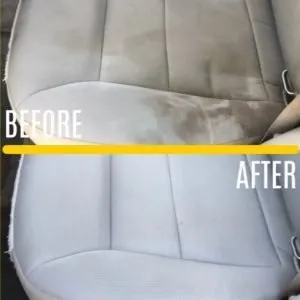Easy DIY Steps to Store Water for an emergency, long term, in your home. With tons of answers to common questions!
How to Store Water for Emergency
Hopefully, you’ll never need to use an emergency water supply in your home. BUT, it’s always best to have one available, just in case.
There are a few reasons why you might not be able to use water from your tap. Occasionally, local water departments find the water supply has been contaminated due to pipes bursting, flooding, or other less common causes.
Or, if you have well water, like me, you lose water whenever you lose electricity. In fact, about once a year we’ll lose water for a day or more due to hurricanes, power grid issues, or even winter storms.
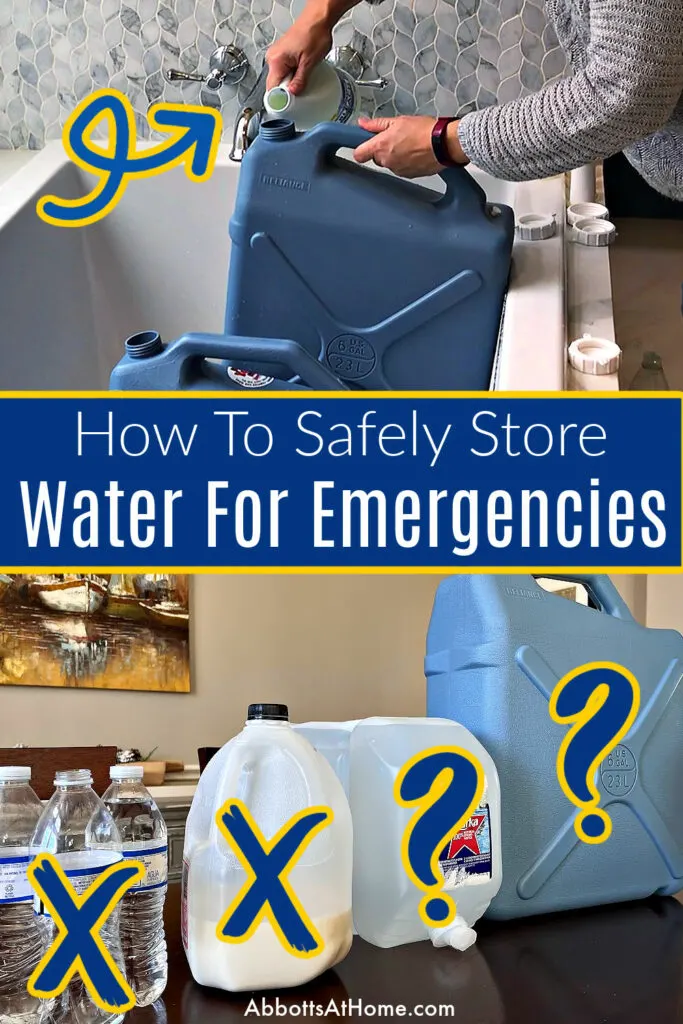
And, the last reason, I can think of, that you might need to store water long term is for cabins, camping, or remote vacation homes that don’t have access to running water.
In this post, I’ll give you the easy steps you need to follow to safely bottle water for an emergency, go over how much water you’ll need for one week, and all of the water storage tips you should know!
Now, let’s get to how to store water for an emergency!
Table of contents
How Long Can You Safely Store Water
Water that has been bottled correctly actually doesn’t go bad. It just starts to taste bad. You can typically store water for about 1 to 2 years before it starts to taste stale.
You might be able to keep your bottled water tasting fresh for up to 6 years by adding alkaline water treatment drops to the water. I use Ion Alkaline Water Drops in my emergency water supply.
Store-bought water generally has an expiration date somewhere on the bottle that indicates when the bottler thinks the water could start to have a stale taste.
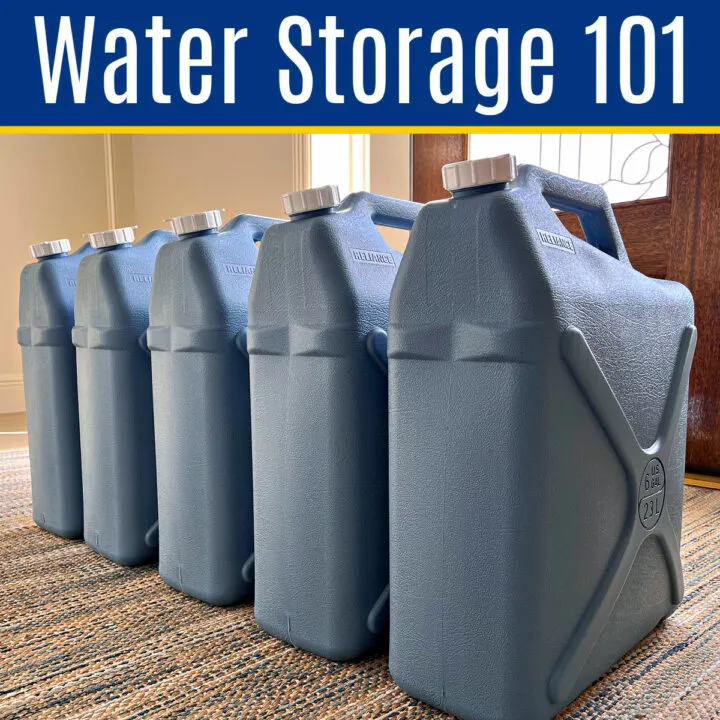
Where Do You Store Water At Home
Water should always be stored in a cool place, out of direct sunlight inside a home. Never store your drinking water near heaters or chemicals.
Water storage bottles that are heated by direct sunlight OR from being left near heat sources, in hot garages, closets or attic spaces will start to taste bad faster.
In fact, chemicals in plastic containers could leach into water if the plastic heats to just 100 degrees Fahrenheit. So, it’s important to store your emergency water in a cool, dark place.
I prefer to store our water in 1st floor closets without windows, pantries, or cabinets. You can also store water in cool, dark, dry basements.
Just be sure to use heavy-duty, water storage containers to eliminate the risk of leaking water bottles that can damage flooring or furniture in your home.
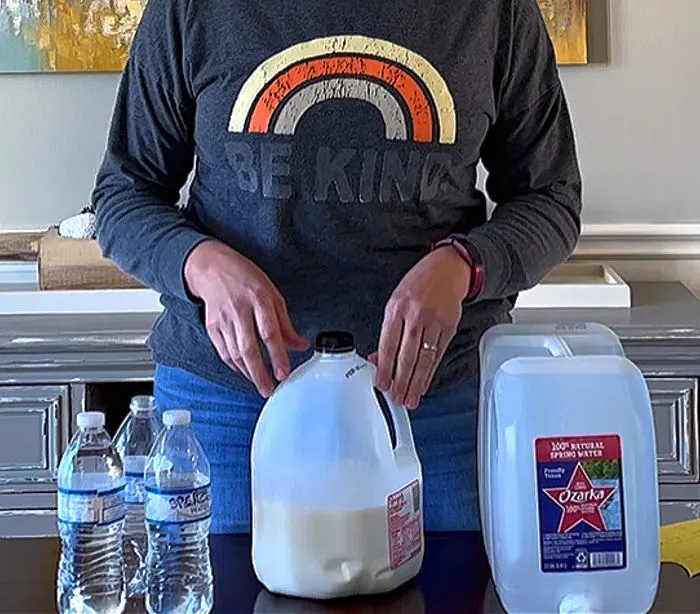
How Much Water Should You Store For An Emergency
FEMA and Ready.gov recommend that you have 1 gallon of water stored per person, per day. They recommend that you have a 2-week supply for each person.
That emergency water recommendation only covers water you’ll need to drink, wash hands, and prepare food. One gallon of water DOES NOT include water to bathe or to flush your toilets.
You might need more than 1 gallon of water during hot months, for babies, elderly, pregnant women or nursing mothers, or sick family members. Don’t forget to store enough emergency water for pets too!
I typically have 1 weeks worth of emergency water. Since I know I can leave my home if I’ll be without water for more than a few days.
If you live in a place where you cannot easily leave your home during weather emergencies, then you should try to store a 2 week supply.
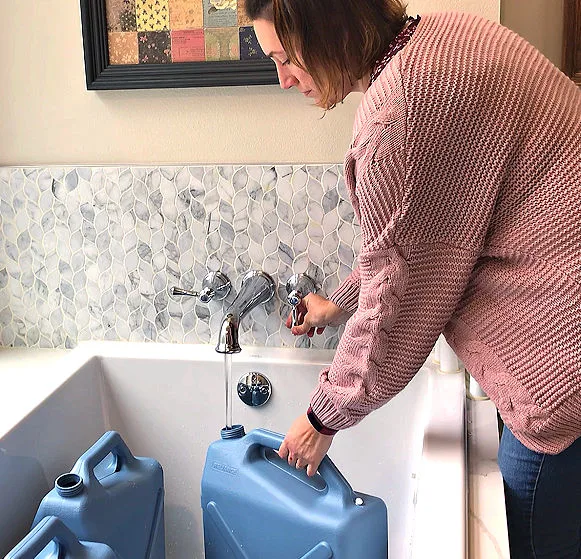
One Week Emergency Water Supply For A Family of 4
Let’s go over some quick emergency water storage math. Since you need 1 gallon of water per person, per day, you’ll need 28 gallons of water total for a family of four.
In most grocery stores, you can find individual water bottles (with about 17 ounces in each), 1 gallon water bottles, and 2 1/2 gallon water bottles to use for emergency water.
It’s pretty common for people to grab these before a big hurricane or winter storm. BUT there are negatives with each.
Individual Water Bottles
You’d need 8 to 9 large cases of individual water bottles for a family of four. That’s somewhere around 184 individual bottles. There are 4 big negatives with using these for emergency water.
It can be hard to find space to store all of those in a house, the biodegradable plastic leaks over time, you’ll have to use and replace these about once a year, and I hate using single-use water bottles just from a waste standpoint.
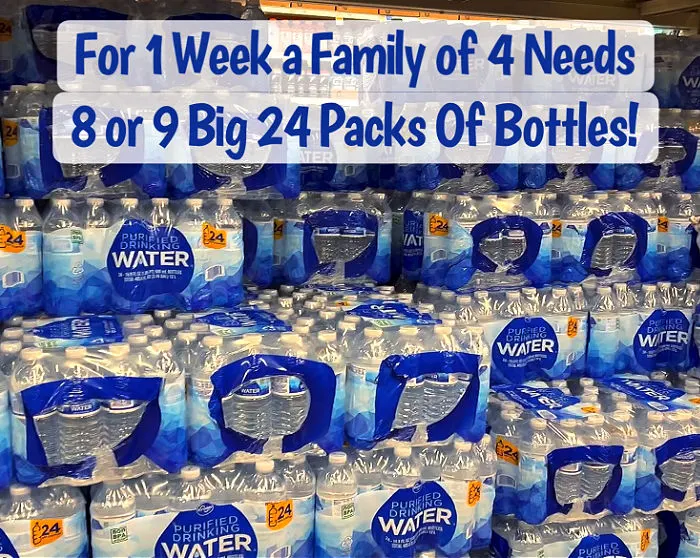
One Gallon Jugs
You’ll need 28 – 1 gallon water jugs to have enough emergency water for a family of four. Again, it’s biodegradable plastic that will leak over time.
And, trying to find space for 28 water jugs in your house can be a pain. Especially since you’ll need to make sure that if one leaks, it’s not sitting on something that can be damaged by water.
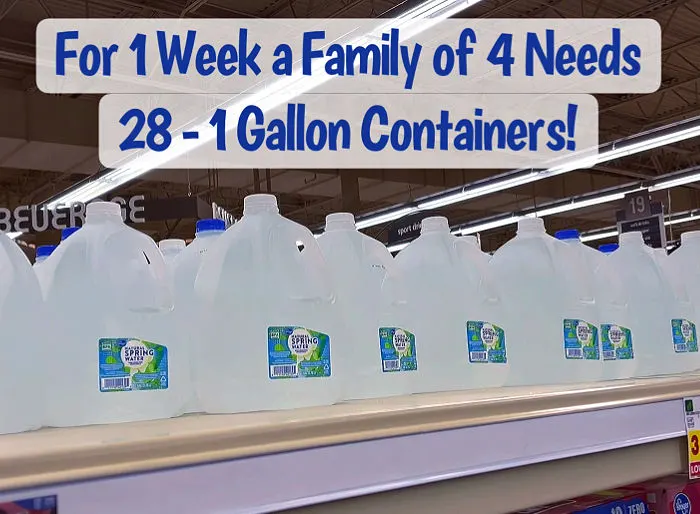
2 1/2 Gallon Water Bottles
This option is the best of the store-bought options. You only need to find room to store 12 of these. Which can still be tough with limited space. And, it will still leak over time.
But, the plastic is a bit thicker, so it will take longer to leak. The best part about these is that they usually come with a handy, built-in water spout. That spout makes washing hands or filling cups with it super easy!
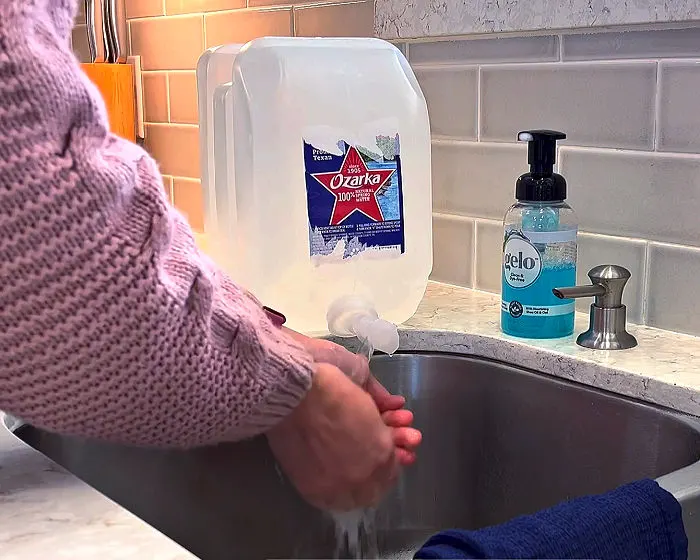
Heavy Duty Storage Containers
A 5 or 6 gallon heavy duty, food-grade water storage container is the best option to store water for an emergency. Be sure you find one that says it’s BPA free.
A family of four only needs 5 – 6 gallon emergency water containers to have a weeks worth of emergency water. If you buy the tall, skinny containers I used, they don’t take up much space.
Mine fit in the closet under my stairs, with tons of space leftover. You can see it in the video below. 🙂
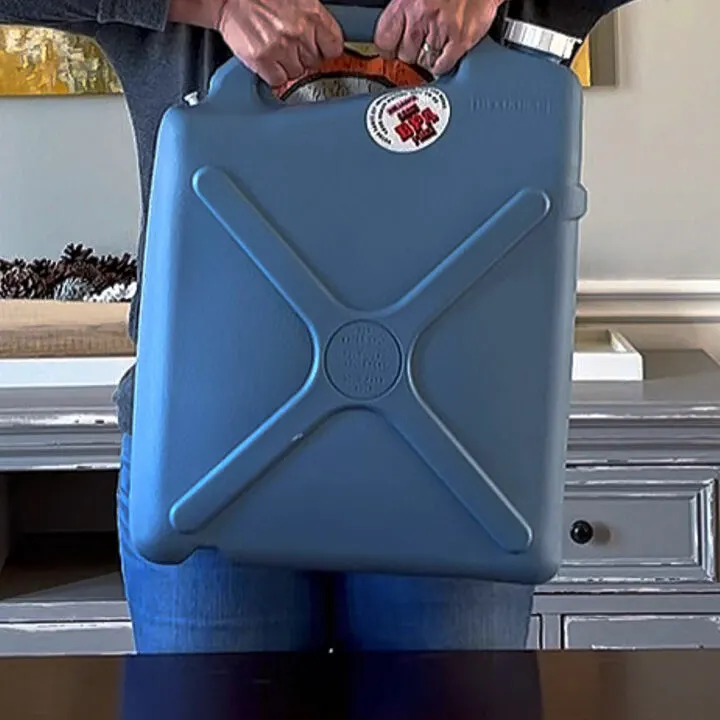
How Do You Flush Toilets Without Water
You can pour water directly into the toilet tank to flush it. Most tanks will need between 1 1/2 to 4 gallons of water. But could need as much as 7 gallons in older toilets. So, try to only flush when necessary.
If you know a winter storm or hurricane is coming your way, fill a tub with water to use just for flushing toilets. You could also use pool water to flush toilets in an emergency. Just scoop it up in a clean bucket to take it inside.
How Long Can Water Stay Fresh In A Plastic Bottle
If you followed all safety guidelines when bottling your water AND kept it away from heat and sunlight, water in a plastic bottle will stay fresh for 1 to 2 years.
Like I mentioned earlier, using alkaline drops that make your water more alkaline might extend the life of your long-term, emergency water supply to 6 years before the water starts to taste stale.
I strongly recommend using a heavy-duty, food safe plastic storage container for water. Those containers are made with thicker plastics that do not breakdown and leak.
Thin water bottles or plastic jugs ARE biodegradable and will develop small leaks over time. Sometimes within just 6 months.
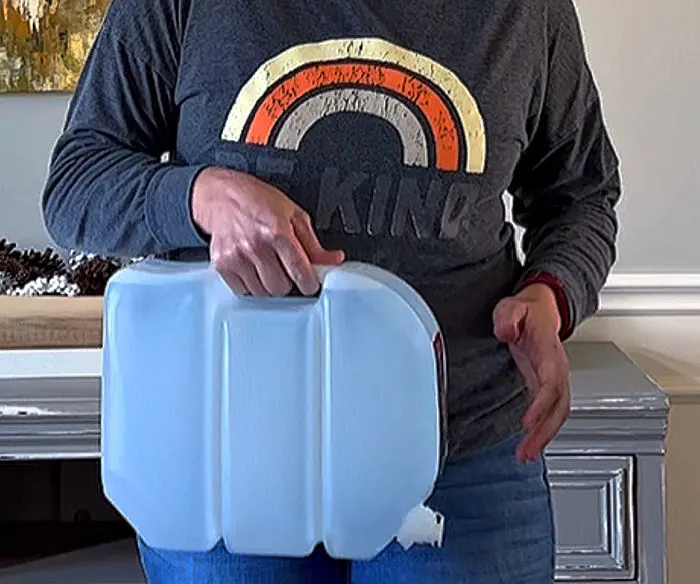
Can You Store Water in Milk Jugs
You should avoid using Milk Jugs or Juice Containers, if you want to reuse large plastic drink containers for an emergency water supply.
The milk or sugars in juice are pretty hard to completely remove from inside the container. And, that milk or fruit sugar is great at helping bacteria grow in bottles.
It’s better to use large Gatorade, energy drink bottles, or pop bottles if you are trying to reuse containers you already have on hand.
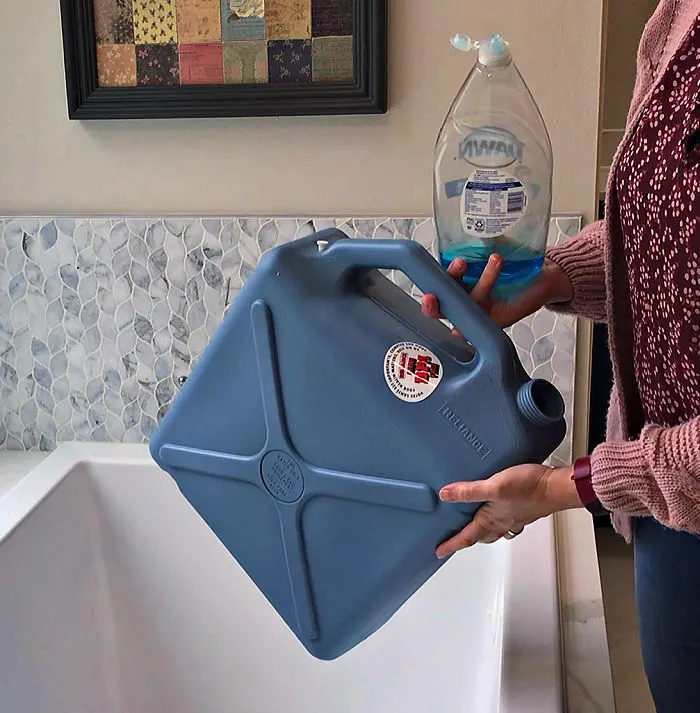
How Do You Bottle Water For An Emergency
Here’s the easy steps to bottle water for an emergency that are recommended by FEMA. You can see me doing all of these steps in the second half of the video below.
- Always use food-grade water storage containers that have never been used to store chemicals.
- Wash the inside of the container with a few drops of dish soap and some hot water. Make sure to shake the soapy water around so that it touches every bit of the container.
- Completely rinse out all of the dish soap.
- Next, add about 1 teaspoon of non-scented household bleach with 1 quart of water to the bottle. Screw on the lid, then shake the liquid around. Be sure to have it touch all areas inside the bottle.
- Pour out the bleach and rinse the bottle with clean water again.
- Now, you can fill the container with tap water. Be sure to use tap water, not water from an outside hose or faucet. That water is not safe for drinking.
- Optional Step: Add Ion Water Treatment Drops to extend the freshness of the water from 2 years to up to 6 years.
- Screw on the lid nice and tight. Then label each container with the date you made it and the date you want to check it for freshness or replace it with fresh water.
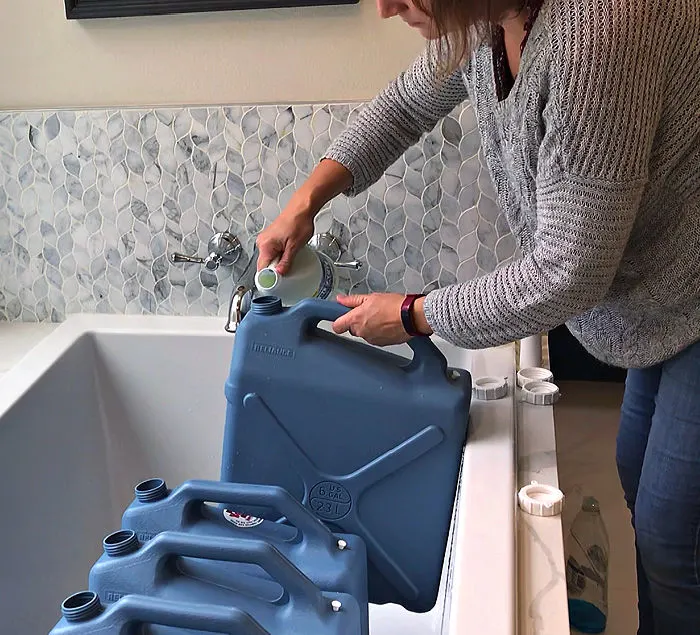
Quick Tip: When you’re ready to replace the water in your emergency water storage containers, pour the old water into a pool or onto your flower beds to avoid wasting it!
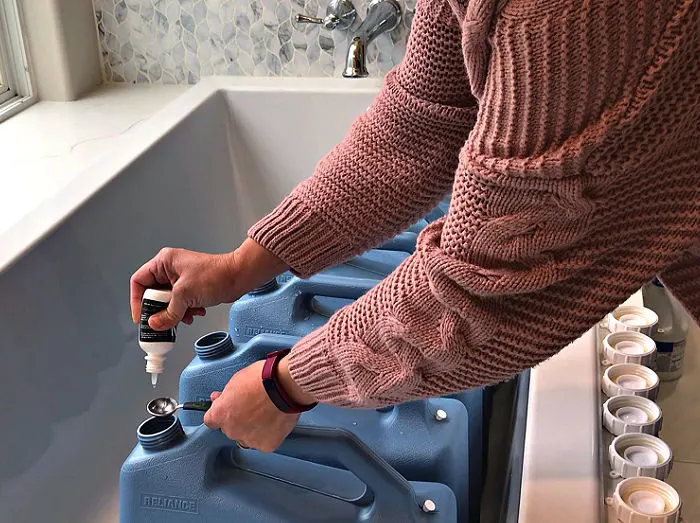
How To Store Water for Emergencies Video
Watch this video for a step by step guide to getting your long term water storage ready.
Related Posts
- Get Your Home Ready For A Hurricane – Inside and Out
- Supplies & Food To Stock Up On Before A Hurricane
- How to Clean Up Your Home After Flood Damage
More DIY Projects for Homeowners
Everyone will need this trick one day – How to Remove Water Stain from Ceiling Without Paint! Or this post for Can You Paint Over Water Stains On Ceiling?
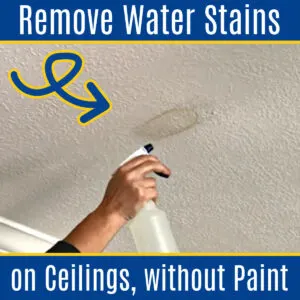
Check out 11 Hidden Amazon Prime Benefits I LOVE! And, here’s How Do I Get Rid of Cable And Still Watch TV. Cutting the cord saves us $100 a month!

You might also like this DIY for How to Whiten Tile Grout or this Does Grout Renew Work?. It’s a Game Changer!

And, this super popular post for How to Clean Car Seats At Home, the Easy Way or Best Way To Deep Clean Car Seats.
And, if it is time to Stain your Front Door, check out these steps for how I restain a front door without stripping it or removing it. 🙂
Feeling inspired? Now that you’ve read these tips for How to Store Water for Emergency, you’re ready to make your own water storage.
Let me know if you have questions. Don’t forget to sign up for the Abbotts At Home email newsletter to get DIY, Remodeling, and Crafty ideas in your inbox.

Stephanie Abbott has been remodeling homes, updating & building furniture, and working on DIY home maintenance and cleaning tips for over 20 years. Her remodeling has been featured in Better Homes and Gardens Magazine. And, her DIY YouTube channel has had more than 8 million views.
Most of the DIY tutorials and videos on this site focus on beginner to intermediate level DIY Projects that can be done in an affordable way without high-end, expensive tools. All of the cleaning tips on this website have been tested in her home.

